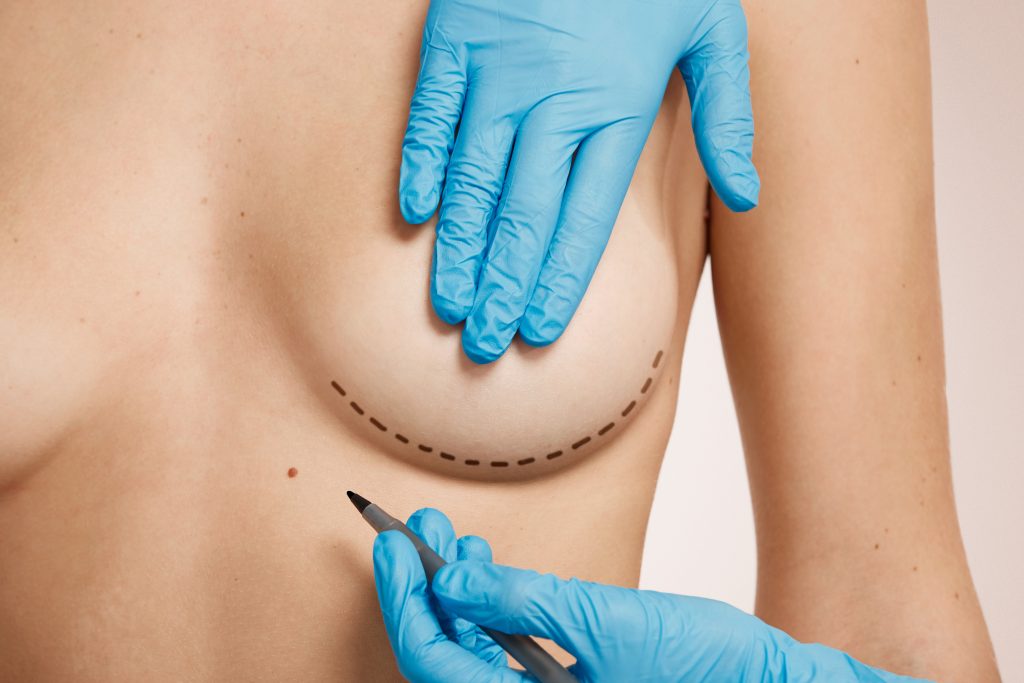Breast enhancement encompasses a range of procedures aimed at altering the size and shape of the breasts to meet personal aesthetic goals. Whether through surgical implants, fat transfer techniques, or non-surgical options like supplements and exercises, individuals seek breast enhancement for various reasons including boosting self-confidence, restoring volume post-pregnancy or weight loss, and achieving a more balanced body proportion. As medical technologies advance, the options for breast enhancement become more varied and accessible, offering tailored solutions that prioritize safety and natural-looking results.
Understanding Breast Implant Options: Silicone vs. Saline
Natural Feel
Silicone implants mimic the feel of natural breast tissue more closely than saline options. Many women prefer them for their softness and how they move with the body.
However, this realism comes at a cost. The risk of silent rupture is a concern with silicone implants. This means they can leak without immediate symptoms, making regular MRI scans necessary to ensure their integrity.
Adjustability
Saline implants stand out for their adjustability after surgery. Doctors can modify the size by adding or removing saline solution. This feature allows for fine-tuning that might be desired post-operation.
The process involves smaller incisions compared to silicone because they are filled once in place. This could mean less scarring and potentially easier recovery for some patients.
Health Considerations
While both types of implants have pros and cons, health considerations play a crucial role in decision-making.
-
Silicone requires vigilant monitoring due to silent ruptures.
-
Saline offers an added safety net; if these rupture, the body safely absorbs the saline solution.
Each option carries distinct advantages depending on individual priorities such as aesthetics, adjustment possibilities, and health concerns.
Recognizing Symptoms of Implant Complications
Persistent Pain
Persistent pain and swelling are major red flags. They often indicate a complication with breast implants, such as rupture or infection. If you experience ongoing discomfort, it’s critical to seek medical advice immediately.
Pain should not be constant after the initial recovery period. If it persists, this could point towards implant illness or surgical complications. Imaging and routine screenings are essential for an accurate diagnosis.
Shape Changes
Unexpected changes in breast shape or size can alarm anyone. These symptoms might signal implant displacement or leakage. It’s important to monitor any alterations closely.
Such changes require prompt attention from a healthcare provider. They will likely use imaging tests to determine the cause of the issue.
Unusual Lumps
Finding lumps or experiencing skin rashes around the breasts is concerning. These could suggest an allergic reaction, implant rejection, or even textured implant complications.
-
Allergic reactions may present as skin rashes.
-
Implant rejection can manifest through unusual lumps.
Immediate consultation with your doctor is vital for addressing these issues early on.
Risks and Long-Term Health Considerations of Breast Implants
Capsular Contracture
Capsular contracture is a common concern. It happens when scar tissue forms tightly around the implant. This can make breasts feel hard and look distorted.
Many women report discomfort due to this condition. In severe cases, surgery might be needed to remove the scar tissue or replace the implant.
Replacement Surgery
Breast implants are not designed to last forever. Over years, they can wear out or even rupture. This makes replacement surgery a potential future need.
Health experts recommend regular monitoring of breast implants. An MRI every few years helps check their condition.
Monitoring Needs
Implants require ongoing attention for health reasons.
-
Regular check-ups help catch issues early.
-
MRI scans are advised to monitor for silent ruptures.
These steps are crucial for maintaining health and well-being over time.
Exploring the Link Between Breast Implants and Cancer
Risk Factors
Breast implants can pose health risks. One rare but serious concern is anaplastic large cell lymphoma (ALCL). This cancer affects cells surrounding the implant.
Many women choose breast implants without knowing this risk. It’s crucial to understand that certain types of implants increase the likelihood of developing ALCL. Research has shown a connection between textured surface breast implants and a higher incidence of this disease.
Recognizing Symptoms
Early detection is vital for effective treatment. Symptoms include persistent swelling or pain around the implant area. These signs shouldn’t be ignored.
If you notice these symptoms, seek medical advice promptly. Tests may include imaging studies and biopsies to examine breast tissue and fluid around the implant for signs of ALCL.
Monitoring and Awareness
The risk of getting cancer from breast implants is low but real. Being informed helps in making better health decisions.
Regular check-ups are essential for those with breast implants. These should involve physical exams and possibly imaging tests to monitor any changes in breasts or surrounding tissues.
FDA Requirements for Breast Implant Safety
Long-term Studies
Manufacturers of approved breast implants must carry out extensive research. This ensures the long-term safety and effectiveness of their products. They study how these medical devices perform over years.
These studies help identify potential risks and benefits. For example, they can find out if there’s a higher chance of complications as time goes on.
Clear Labeling
The FDA insists on transparent information about risks. Labels must warn users about possible implant rupture and other complications. This clarity helps individuals make informed decisions about breast enhancement.
Labels also guide patients on what to do if they suspect a problem with their implants. This is crucial for timely intervention.
Regular Updates
To keep their approval, manufacturers must regularly share clinical trial results with the FDA. These updates include new findings on safety or effectiveness.
This process ensures that only safe, effective medical devices remain available to the public.
Treatment Options for Implant Rupture and Complications
Surgical Solutions
Surgical intervention is often the primary course of action following an implant rupture. This typically involves either the removal or replacement of the compromised implant. Such procedures are necessary to prevent further complications and ensure patient safety.
For individuals experiencing capsular contracture, a condition where scar tissue forms around the implant, surgery may also include removing this tissue. This step is crucial in relieving pain and restoring the breast’s appearance.
Non-Surgical Methods
In cases where complications are minor, non-surgical treatments can be effective. These might include medication to manage symptoms or physical therapy to improve mobility and discomfort around the implant area.
Non-surgical options provide a less invasive alternative for addressing issues that do not pose immediate risks to health. However, they are not suitable for all types of complications, particularly those involving ruptured implants.
By understanding both surgical and non-surgical treatment options for breast enhancement-related issues like implant ruptures and capsular contracture, patients can make informed decisions about their care. It’s important to consult with a healthcare professional who can offer personalized advice based on individual needs and conditions.
-
For silent ruptures, detection through imaging tests followed by prompt surgical intervention is key.
-
Regular check-ups post-breast enhancement surgery help in early detection of potential problems, reducing the need for additional surgeries.
Reoperation due to complications such as rupture underscores the importance of ongoing monitoring after breast enhancement procedures.

Considerations Before Opting for Breast Implants
Health History
Before considering breast augmentation surgery, it’s crucial to evaluate your personal health history. A thorough physical exam by a plastic surgeon can reveal potential risk factors for complications. For instance, those with autoimmune diseases may have an increased risk of developing Breast Implant Illness (BII).
Patients should also consider any family history of breast cancer. This is important because certain procedures might need adjustments in such cases. Making informed decisions involves understanding these risks.
Future Surgeries
Breast implants are not lifetime devices. They often require replacement or removal after several years. This means future surgeries are almost a given.
Understanding this aspect helps set realistic expectations about the journey ahead. It highlights the need for ongoing medical consultations and possibly more operations over time.
Financial Implications
The financial aspect plays a significant role in the decision-making process. Initial surgery costs vary widely, but they’re just part of the equation.
Future procedures for implant replacement or complications add to the total expense. Patients must consider these long-term financial implications before proceeding with breast enhancement.
Communicating with Your Surgeon about Breast Enhancement Risks
Medical History
Discussing your medical history is crucial. It helps assess risks tied to breast enhancement. Mention any health issues, allergies, or past surgeries. This step ensures safety during the surgical procedure.
Your surgeon can adjust their approach based on your history. They might also discuss how conditions like diabetes could affect recovery. Sharing this information prevents complications related to anesthesia and healing.
Surgeon’s Experience
Ask about your surgeon’s experience with implant-related complications. Learn about their strategies for managing these issues. Experienced surgeons will have a plan in place for potential problems.
Request to see before-and-after photos of previous patients. This sets realistic expectations for outcomes. Photos demonstrate the surgeon’s skill and give you an idea of possible results.
Safety Communication
Ensure open safety communication with your health care provider throughout the process:
-
Discuss all aspects of the augmentation.
-
Understand every step of the procedure.
-
Ask about adverse event reporting programs they participate in.
This communication builds trust between you and your physician.
Final Remarks
Breast enhancement, through implants, presents a complex decision requiring thorough understanding and consideration. The choice between silicone and saline, awareness of potential complications, and the long-term health considerations highlight the importance of informed decision-making. The link between breast implants and cancer, alongside FDA safety requirements, underscores the need for vigilance and open communication with healthcare providers. Treatment options for implant issues further emphasize the necessity of prompt attention to any concerns post-surgery. Before opting for breast enhancement, individuals must weigh the risks against the benefits, engaging in comprehensive discussions with their surgeons to ensure clarity on all possible outcomes.
Encouraging a proactive approach to health and safety, this article aims to empower readers with knowledge crucial for making informed choices about breast enhancement. For those considering this path, consulting with a qualified surgeon who meets stringent FDA standards is essential. Let this be your first step towards a safe and satisfying breast enhancement journey.
Frequently Asked Questions
What are the main differences between silicone and saline breast implants?
Silicone implants are filled with silicone gel, offering a more natural feel, whereas saline implants are filled with sterile salt water, which can provide a firmer feel. Both types have unique benefits and considerations regarding aesthetics and safety.
How can I recognize symptoms of implant complications?
Symptoms may include pain, swelling, changes in breast shape or size, lumps around the implant area, or feeling unwell. It’s crucial to consult a healthcare provider if any unusual symptoms occur post-surgery.
Are there long-term health risks associated with breast implants?
Yes, some risks include capsular contracture (scar tissue formation), implant rupture or leakage, and potential need for additional surgeries. There is also ongoing research into a possible link between breast implants and certain types of cancer.
Is there a link between breast implants and cancer?
Research suggests an association between breast implants and anaplastic large cell lymphoma (ALCL), a rare form of non-Hodgkin’s lymphoma. However, it’s important to discuss individual risk factors with your healthcare provider.
What FDA requirements exist for ensuring the safety of breast implants?
The FDA requires manufacturers to conduct extensive testing on the safety and effectiveness of their products before approval. This includes studies on rupture rates, longevity of the implant materials, and potential links to illnesses like cancer.
What options are available if my implant ruptures or I experience complications?
Treatment options may vary from monitoring the situation without immediate intervention to surgery for removing or replacing the implant. The best course depends on specific circumstances such as type of complication experienced.
What should be considered before opting for breast enhancement surgery?
Considerations include understanding all potential risks involved; choosing between silicone vs saline based on personal preference; assessing long-term health implications; discussing expectations realistically with your surgeon; considering future maintenance surgeries that might be needed.



